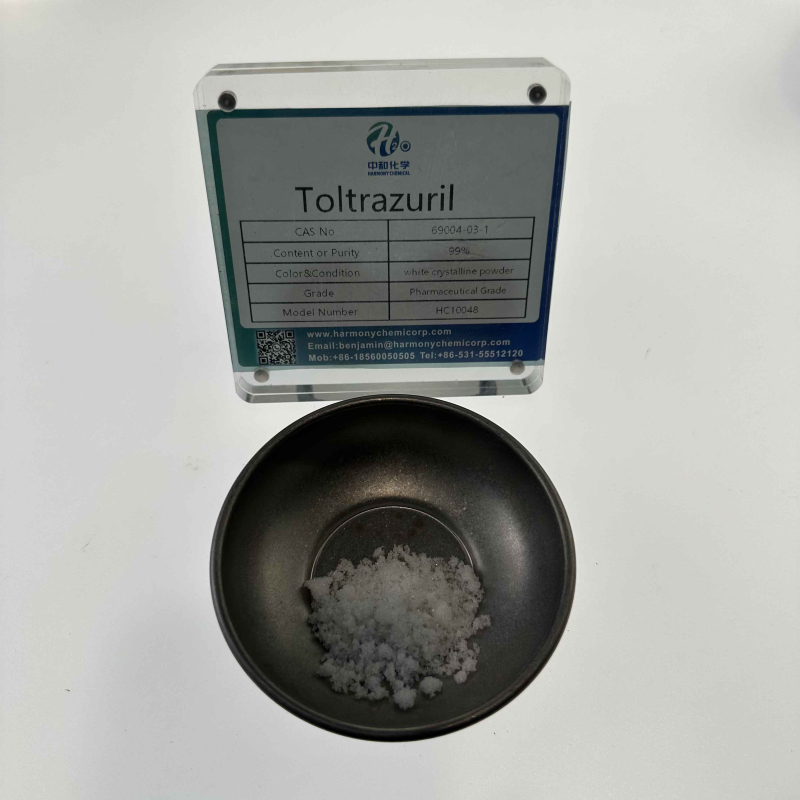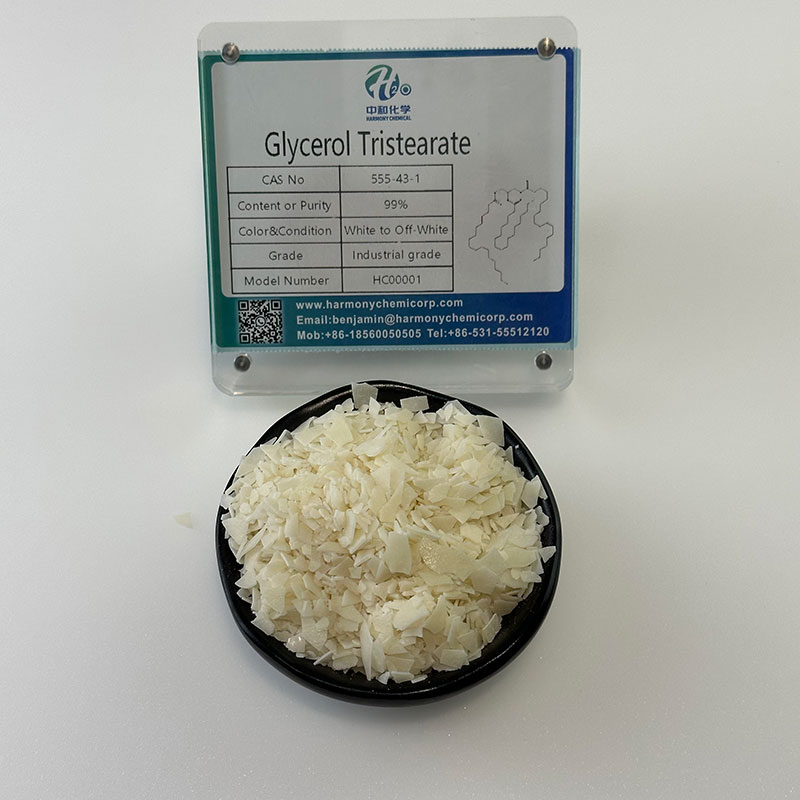Chemical factor structure mannequin of petroleum resin:The most commonly used petroleum resin manufacturing applications are C9 petroleum resin and C5 petroleum resin.C9 petroleum resinC9 petroleum resin mainly refers to a resinous substance formed via polymerization of olefins or cyclic olefins containing nine carbon atoms or copolymerization with aldehydes, fragrant hydrocarbons, terpene compounds, etc.C9 petroleum resin, also acknowledged as aromatic petroleum resin, can be divided into sorts such as hot polymer
Contact Now
nameAcetophenoneCAS NO98-86-2Molecular formulaC8H8Omolecular weight120.15melting point19-20 °Cboiling point202 °Cflash point180 °FStorage conditionsStore below +30°C.formLiquidcolourClear colorless to light yellow
Contact Now
nameToltrazurilCAS NO69004-03-1Molecular formulaC18H14F3N3O4Smolecular weight425.38melting point194-196°Cdensity1.54±0.1 g/cm3(Predicted)Storage conditionsSealed in dry,Room TemperatureAcidity coefficient (pKa)Sealed in dry,Room Temperatureformneat
Contact Now
nameAdemetionine disulfate tosylateCAS NO97540-22-2Molecular formulaC22H34N6O16S4molecular weight766.78melting point>122°C (dec.)Storage conditionsInert atmosphere,Store in freezer, under -20°CsolubilityDMSO (Slightly, Heated), Water (Sparingly)formSolidcolourWhite to Pale Yellow
Contact Now
Polyvinylpyrrolidone, additionally acknowledged as PVP, is a polymer of ethylene pyrrolidone. Due to its unique ranges of polymerization, it can be divided into soluble PVP and insoluble PVPP (polyvinylpyrrolidone). The relative molecular weight of soluble PVP is 8000~10000, which can be used as a precipitant to precipitate by way of reacting with polyphenols. By the usage of this method, there are effortlessly residual PVP in the wine.
Contact Now
Melting point 1204 ° CDensity2,52g/cm3FormPowderSpecific gravity 2.52ColorwhiteWater solubilityinsolublecoldH2ChemicalbookO, decomposeinboilingH2OHydrolysis sensitivity 2: reactswithaqueousacidLithium silicate is a compound fashioned with the aid of the shape of metal lithium and silicate ions, and its alternate identify is lithium water glass. Most of them use the lithium hydroxide technique to react sodium silicate with sulfuric acid to produce hydrated silicic acid and sodium sulfate.
Contact Now
Chinese nameSodium oleateChinese aliascis 9-octadecenoic acid sodium salt; (Z) -9-octadecenoic acid sodium salt -9-octadecenoic acid sodium salt; 9-Octadecylic acid sodium; Sodium octadecene; (Z) -9-Octadecylic acid sodium salt;English nameSODIUM OLEATEEnglish aliascis Oleate sodium salt; Cis-9-Octadecenoic acid sodium salt, Oleic acid sodium salt; Eurol; Pionin D 951P; Oleic Acid Sodium Salt;CAS number143-19-1Molecular formulaC18H33NaO2Molecular weight304.44300Precision quality304.23800PSA40.13000Sodium oleate, additionally acknowledged as sodium octadecene, cis 9-octadecenol,
Contact Now
nameCupferronCAS NO135-20-6Molecular formulaC6H9N3O2molecular weight155.15melting point150-155 °C (dec.)boiling point278.95°C (rough estimate)density1.3092 (rough estimate)Storage conditions2-8°CformPowdercolourNeedles from water
Contact Now
Mainly used in PVC molding methods such as rolling, injection, blow molding, and extrusionAs a catalyst, the paint and coating comprise DBT compounds; Soft polyvinyl chloride (PVC) profiles, whether or not they are gentle or extruded collectively with challenging PVC; Outdoor fabric are included with PVC containing DBT compounds as stabilizers on their surfaces;Pipes, drainage ditches, and home equipment used for out of doors rainwater, as nicely as protecting substances
Contact Now
The conductivity of carbon black is carefully associated to its shape (especially graphite microcrystalline structure), floor properties, and particle size. The conductive mechanism of carbon black in rubber often consists of conductive channel and Field electron emission mechanism. The conductive channel mechanism is that carbon black aggregates come into contact with every different in the adhesive to structure a community like channel and behavior electricity.
Contact Now
Melting point: 165-185 ℃Density: 1.08g/cm3Refractive index: 1.488 (20 ℃)Water absorption rate: no longer extra than 0.4%Softening temperature: 60-65 ℃Glass transition temperature: 66-84 ℃ (varies relying on diploma of polymerization)Solubility: Soluble in most natural solvents such as alcohols/ketones/ethers/esters, insoluble in carbon hydrocarbon solvents [2]Application Editing1.
Contact Now
name5-FluorouracilCAS NO51-21-8Molecular formulaC4H3FN2O2molecular weight130.08boiling point190-200°C/0.1mmHgdensity1.4593 (estimate)Storage conditions2-8°CsolubilityH2O: 10 mg/mL, clearformpowdercolourwhite
Contact Now
1. Used for ester trade reactions.2. Use as an additive and intermediate in chemical products.3. Use: It is used to put together adhesive and as catalyst for transesterification and polymerization reaction.4. Use It is used to make adhesives between metallic and rubber, metallic and plastic, as nicely as catalyst for transesterification and polymerization, and uncooked substances for pharmaceutical industry.5. Catalysts used for esterification reactions, ester to ester conversion reactions of esters such as acrylic acid.
Contact Now
ProjectIndicatorsAppearanceLight yellow transparent liquidActive substance content,%70 ± 2Free amine content,%≤ 2.0PH value (10% aqueous solution)4~7Filling, dipping or spray can be used as mothproof for wool fabrics; When used as a fungicide to deal with tough surfaces, it can be blended with chlorine dioxide for use
Contact Now
Melting Point2-4 °C (lit.)Boiling Point90 °C (lit.)Density1.069 g/mL at 25 °C (lit.)Vapor Density3.1 (vs air)Vapor Pressure18 mm Hg ( 21.1 °C)Refractivityn20/D 1.368(lit.)Flash PointStore below +30°C.Although phosgene has excessive reactivity, its fairly poisonous and corrosive byproducts pose significant environmental strain and will progressively be phased out; DMC has a comparable nuclear response response center.
Contact Now
Fusing Point8.2 °CBoiling Point224-226 °C (lit.)Thickness1.056 g/mL at 25 °C (lit.)Vapor pressure<1 hPa (20 °C)Refractivity22n20/D 1.472(lit.)Flash Point220 °FStorage ConditionsStore at +5°C to +30°C.Solubilitytoluene: soluble(lit.)1,3-Dimethyl-2-neneneba imidazolinone can be used as solvent in many natural synthesis and conversion reactions; Used to learn about the formation of steady functionalized hydrogenated silane double base transition metallic complexes thru photochemistry from fragrant silanes; Dipolar solvents with p
Contact Now
Sodium p-styrene sulfonate has the following characteristics:1) Stability, polymerization resistance, and consolidation resistance all through storage;2) Thermal stability: Excellent in phrases of warmness resistance, it will now not decompose beneath 300 ℃;3) Polymerization: As a kind of sulfonic acid monomer, it has a excessive diploma of polymerization due to its inducing impact of binding to the sulfonic acid team in the para position;4) Free radical polymerization can be performed the
Contact Now
ApplicationsGlyceryl tristearate is an ester derivative, which can be used as food emulsifier, brightener, greasing agent, lubricant, defoamer, and also in various cosmetics.ToxicityIt is safe within the limits mentioned above (FDA, 2000).Use limitAs a crystallization catalyst for cocoa butter 1%; as a molding aid 0.5% to 3%; as a winterizing treatment agent for fats and oils 0.5% (FDA §172.811, 2000). Can be used as gum gum-based substance (GBChemicalbook2760-96).Chemical propertiesColorless crystal or powder. Odorless. Slightly sweet. Relative density (d480) 0.862.
Contact Now
Ethyl acetate is a broadly used satisfactory chemical product with incredible solubility, fast drying, and a large vary of uses. It is a very essential natural chemical uncooked cloth and tremendous industrial solvent, and is extensively used in the manufacturing procedure of acetate fiber, ethyl fiber, chlorinated rubber, ethylene resin, acetate fiber resin, artificial rubber, coatings, and paints.
Contact Now
Name3-ChloropropiophenoneCAS NO936-59-4Molecular formulaC9H9ClOmelting point48-50 °Cdensity1.1115 (rough estimate)flash point>230 °FStorage conditionsInert atmosphere,Room TemperaturesolubilitySolidcolourOff-White to Pale YellowSOLUBLEInsoluble
Contact Now
NameAluminum tripolyphosphateMain ingredientsaluminum tripolyphosphate and its modified substances.Anti rust geneP3O105-Aluminum tripolyphosphate is a new era of pollution-free white rust resistant pigment and an best substitute product for lead and chromium primarily based poisonous rust resistant materials. Since its launch in 1993, this product has been utilized and examined via over a hundred influential paint factories (institutes) in China.
Contact Now
Main purposeEthylene glycol dimethyl acrylate is frequently used in the plastic and rubber industries as a crosslinking agent for ethylene acrylic copolymers, ABS, acrylic sheets, pipes, glass fiber bolstered polyester, PVC, ion trade resins, smokeless powder encapsulation polymerization, glazing, etc. is additionally used as a polymer in copolymerization, which will increase hardness, warmness resistance, climate resistance, solvent resistance, and friction resistance.
Contact Now
nameFlubendazoleCAS NO31430-15-6Molecular formulaC16H12FN3O3molecular weight313.28melting point290°CStorage conditions2-8°Cdensity1.3720Acidity coefficient10.66±0.10formneatcolourWhite to Off-White
Contact Now
nameMebendazoleCAS NO31431-39-7Molecular formulaC16H13N3O3molecular weight295.29melting point288.5°Cboiling point436.98°Cdensity1.1952Storage conditionsSealed in dry,2-8°CformneatcolourWhite to Pale Beige
Contact Now





























